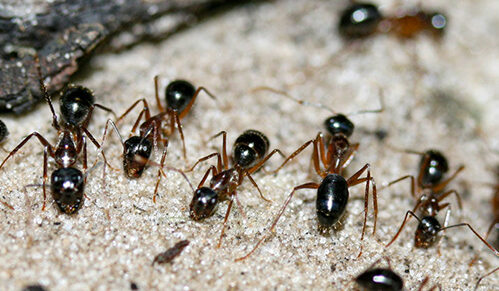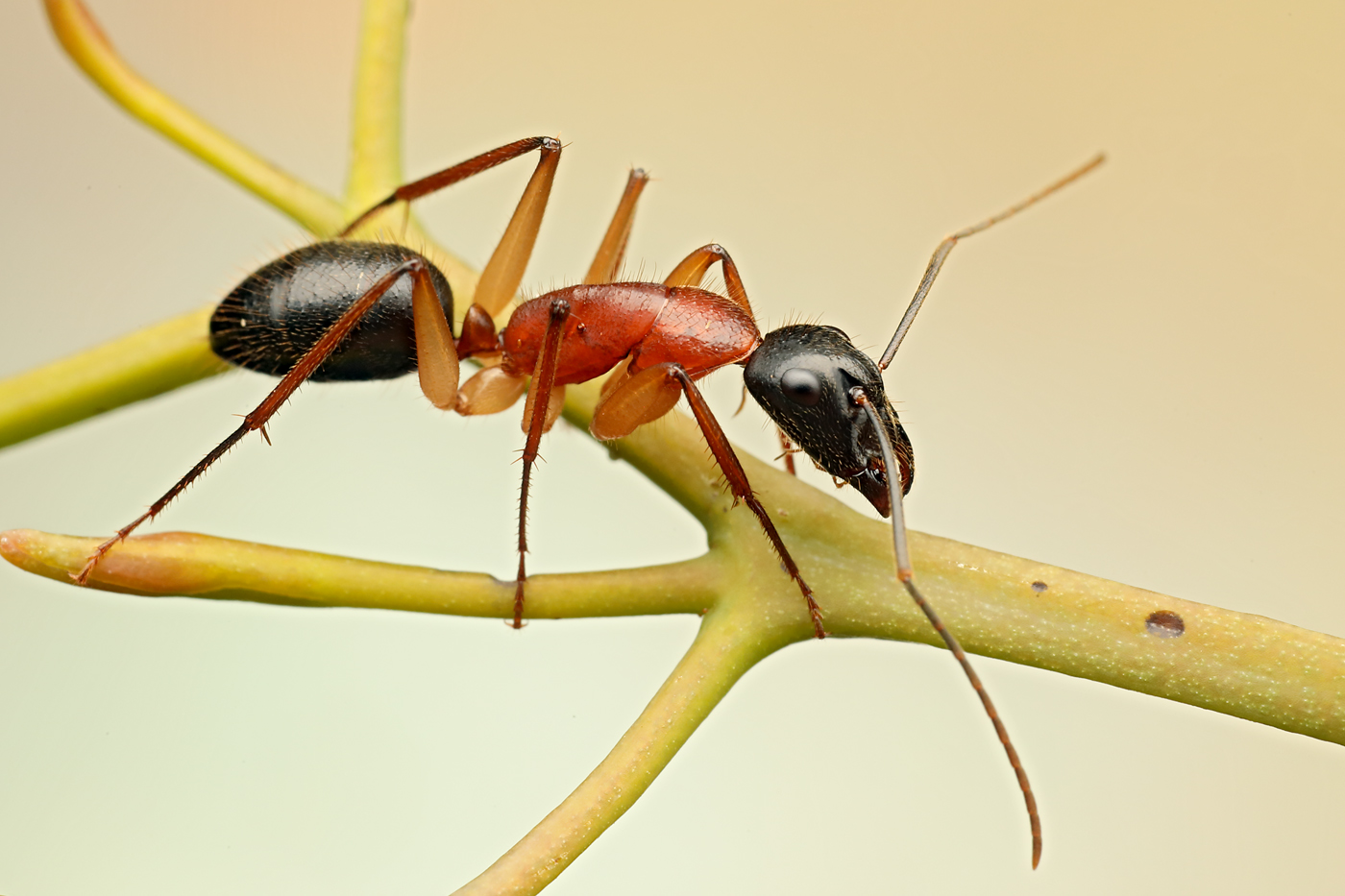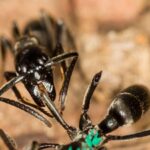Ants’ Love of Pee May Reduce Greenhouse Gas
Ants consume urine for its nitrogen content, and a new study shows that this helps ants thrive in sandy habitats and may even reduce greenhouse gases.
By Emily Rhode
Their beachfront homes came with a view. But they also came with a condition. In order to survive, these residents of southern Australia would need to consume urine. Fortunately for these island-dwelling ants, not many others are willing to pay that high a tax for prime property.
Their taste for vertebrate pee seems to be unique among the local insect population. And the diet of these industrious ants could help change the balance of a particularly powerful greenhouse gas going in the atmosphere.
Researchers at the University of South Australia recently stumbled across a species of common sugar ants, Camponotus terebrans, participating in some surprising and less than appetizing behavior. While doing field work in the sandy habitats of Kangaroo Island, Australia, Dr. Topa Petit noticed the ants racing to scavenge urine left behind by one of the island’s vertebrates. Urine deposited on sand trickles down through the particles relatively quickly compared to soil. While other studies have shown that sugar ants are attracted to urine, the researchers knew that in sandy soil, the tiny invertebrates would have to either drink the urine quickly while it was still wet, or mine the dry urine out of the sand. So they decided to set up an experiment to test the ants’ behaviors.
Sugar ants live in a wide variety of places and have adapted to conditions that other animals cannot survive in. The sand-filled environment of Kangaroo Island does not offer many sources of nitrogen, a nutrient that is essential for survival but is incredibly hard to find in sandy soil. In other studies, ants have been observed getting nitrogen from bird droppings, and in some cases even from animal urine. But no study in Australia had ever observed ants mining dried urine from sand.


Sugar is sweet but pee can’t be beat
To test the ants’ food preferences, Petit and her team set up four separate experiments over the course of several days. In the first test, they set up a “runway” of squares where they set different baits. On the first square, they poured pure rainwater over a base of sand. They poured sugar water, human urine, or salt water into the next squares of sand. Petit’s team even went so far as to test preferences for male vs. female urine by baiting them with each.
Read more about insects’ stinky tastes: Human Scent May Help Manage Mosquitoes
And to really drill down to the ants’ particular favorites, they stained squares with different concentrations of urea, the nitrogen-containing substance found in urine. The concentrations ranged from 3.5 percent all the way up to 10 percent urea. Alongside the urea they poured sugar water and human urine. By taking a sequence of pictures of the squares that contained the bait, the researchers were able to count the number of ants they saw directly on the liquid stains and immediately next to each stain.
Once the first set of observations was complete, the researchers tested to see if the insects had a preference for urine vs. urea, sugar vs. urea, and human urine vs. kangaroo urine. After the numbers were counted, the researchers saw the largest amount of ant traffic on the squares that contained urea, with the 10 percent concentration attracting the most ants. While the ants did not have a preference for male or female urine, they did seem to prefer human urine over kangaroo urine. This could be because animals like kangaroos don’t have as much urea in their urine, since their kidneys are better at absorbing it.
Surprisingly, the ants kept coming back to the stains to forage well past the initial experiment. The researchers were able to tell which stain was which for a whole month, just by counting the number of ants on the stain. Because the stains had long since dried up, the ants had to tunnel down to collect the dried sand to ingest or take back to their nests. The researchers saw some digging down as many as 4 centimeters to collect the goods.
Ants’ role in reducing greenhouse gases
Ants feeding on urine is actually not uncommon, and the phenomenon could prove to be an important piece of the nitrogen cycle. Nitrous oxide, or N2O, is a common greenhouse gas that is over 300 times more powerful than carbon dioxide. It is less abundant than CO2 but has been entering the atmosphere at an increasing rate. It can come from ammonia in things like fertilizer or urine. But if these insects are eating up the urine, there is less in the environment being converted to nitrous oxide. Petit’s team wonders if ants that feed on urine, like the sugar ant, could be used to reduce greenhouse gas emissions in agricultural areas.
RELATED: INSIDE THE WORLD OF FIRE ANTS
The sugar ants’ ability to exploit sources of nitrogen that other species may not be adapted to using could be a huge advantage for them. It could allow the ants to move into areas that have been cleared of vegetation and out-compete the native invertebrates. The researchers hope that future studies can shed more light on this possibility. They believe that studies into the role of sugar ants in the environment have more questions to answer, such as: what kind of microbes in the ants’ gut lets them use the dry urea they mine from the sand, how important is vertebrate urine to the ants’ success, and how large a role do sugar ants play in the cycling of nitrogen. Petit and her team believe that these tiny ants with a penchant for pee could open up a whole new field of research in Australia and beyond.
This study was published in the journal Austral Ecology. Featured photo shows a Black-headed Sugar Ant (Camponotus nigriceps) photographed by patrickkavanagh in Strangeways, Victoria, Australia (CC BY 2.0).
Reference
Petit, S., Stonor, M. B., Weyland, J. J., Gibbs, J., & Amato, B. (2019). Camponotus ants mine sand for vertebrate urine to extract nitrogen. Austral Ecology. https://doi.org/10.1111/aec.12840


About the Author
Emily Rhode is a freelance science writer and municipal water resources educator. Her goal is to make science accessible and interesting for everyone. She has worked as an outdoor environmental educator, science teacher, and professional communicator and trainer.




